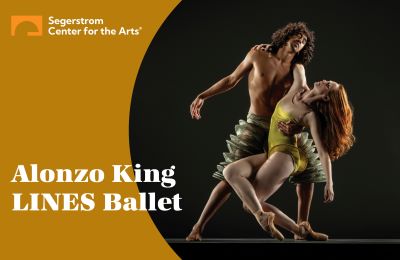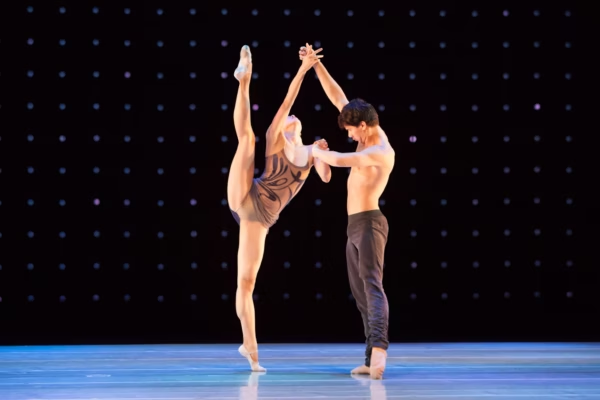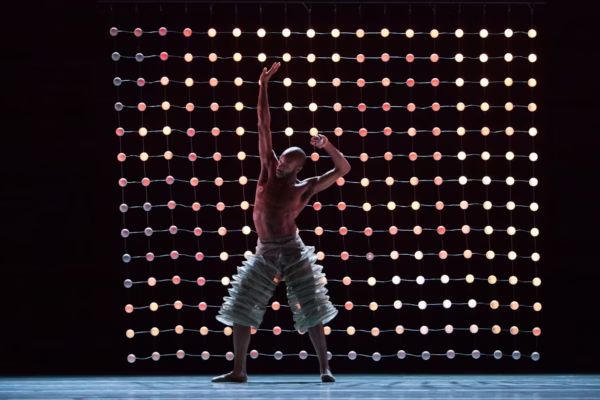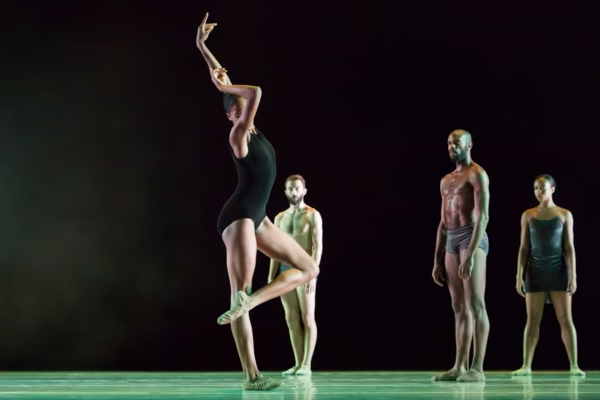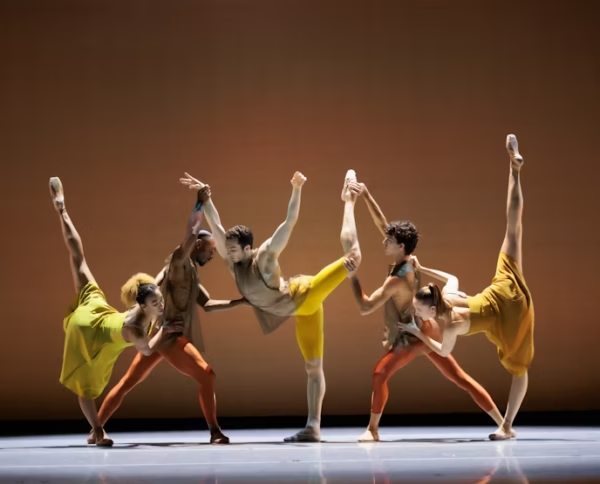Alonzo King LINES Ballet’s Double Bill of Ravel’s Mother Goose and King’s Tribute to Alice Coltrane presented a fascinating study of how two musical worlds—one rooted in French impressionism and the other in American jazz spirituality—can be bound together through movement. King’s choreography bridged these contrasting styles, creating an immersive experience of transformation. The evening at Segerstrom Hall on February 7, 2025, was a journey, intertwining sound, body, and spirit, as each piece conversed with the other.
In Mother Goose, King reframes Ravel’s orchestral suite, transforming familiar fairy tales into meditations on memory, fragility, and transformation. The dancers, in flowing costumes, navigate the duality of Ravel’s score—delicate yet melancholic—with movements that embody both weightlessness and grounded emotion. King peels back the layers of fairy-tale innocence to reveal something more enigmatic, a meditation on the liminal spaces between dreams and reality.
Adji Cissoko, King’s star dancer, delivers a performance that is both delicate and forceful, balancing lyrical grace with visceral power. Her presence onstage is magnetic; her movements sweep across the floor with an ethereal quality, yet there’s a grounded strength in her execution. The fluidity of her limbs seems to defy gravity, yet each gesture lands with purpose. Cissoko’s portrayal of Mother Goose—an archetype requiring more than just physicality—becomes a haunting exploration of vulnerability and maternal warmth, imbued with emotional depth. The audience is drawn in, mesmerized not only by her technicality but by the quiet storm beneath the surface of her performance.
The work unfolds in segments, each bringing a different facet of Ravel’s Mother Goose to life. In “Laideronnette, Empress of the Pagodas,” King leverages Ravel’s sparkling textures, creating a dance that shimmers in the air. The dancers move with sharp, angular lines, evoking the beauty and mystery of the titular character. In “The Sleeping Beauty,” King amplifies the sense of stasis in Ravel’s lilting melody, with dancers moving in and out of time, caught between the dream world and waking reality.
While Ravel’s music evokes innocence, there is an undercurrent of wistfulness and sorrow. King unearths this complexity, revealing emotional layers beneath the surface. The dancers grapple with the weight of the world, their movements imbued with a quiet intensity, aware of the fleeting nature of the world they inhabit.
The second half of the program, Tribute to Alice Coltrane, is a work of deep spiritual resonance, a meditation on movement, music, and transcendence. Rooted in the cosmic jazz of Coltrane, King’s choreography is a profound exploration of the spiritual currents in her work. The dancers become vessels through which the music is felt and made manifest in the physical world. If Coltrane’s compositions summon listeners to contemplate the divine, King’s choreography pushes the audience into a physical experience of that contemplation.
The work opens with imperceptible stillness—dancers move with slow, measured steps, bodies undulating as if responding to an inner pulse. It’s a feeling of suspension, akin to the sense of eternity that permeates Coltrane’s music. The dancers’ movements expand and contract with the shifting textures of Coltrane’s harp, each gesture carrying spiritual weight. Time feels cyclical, expanding outward into infinity.
Cissoko’s role in Tribute to Alice Coltrane is equally mesmerizing. Her movements reflect the duality of Coltrane’s music—grounded yet soaring, meditative yet explosive. She channels the sacredness of sound and dance, creating a performance that feels both personal and universal. Each gesture carries the weight of sacred ritual, blending fluidity and precision. In moments set to Journey in Satchidananda, her presence becomes part of a larger cosmic whole, embodying King’s vision of movement as a spiritual journey.
The musicality of Tribute to Alice Coltrane draws from works like Journey in Satchidananda and Ptah, the El Daoud, becoming the choreography’s heartbeat. The jazz rhythms pulse through the dancers’ bodies, guiding them through moments of release and restraint. The work is a conversation between the dancers and Coltrane’s compositions, weaving together sound, space, and spirit.
King’s choreography channels Coltrane’s duality—earthly yet transcendent. The dancers’ grounded, flowing movements seem to defy gravity, their bodies reaching for a higher plane as though to touch the divine.
Together, Mother Goose and Tribute to Alice Coltrane reveal King’s mastery in blending structure with improvisation, fragility with liberation. While Ravel’s score speaks to the transient beauty of childhood, Coltrane’s music invites cosmic transcendence. King’s choreography binds these themes, showing how art—through sound and movement—can transcend boundaries, offering an experience that is both otherworldly and deeply human.
